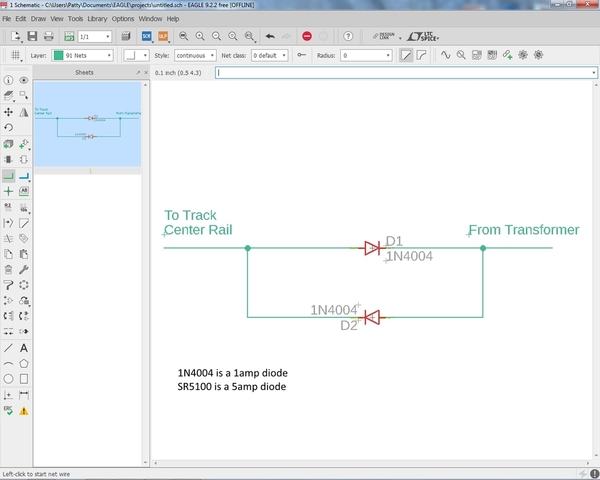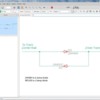Appears several conversations now in progress. As to comment that 25W rheostat is inadequate, them search on a, say, 50W power rating for the rheostat. For example:

There have been a couple comments about the "load" Wattage which I interpret as being the engine itself. In a certain sense it doesn't matter what the load Wattage is. When choosing the dropping mechanism (whether it be diodes, bridges, or rheostats) you're interested in the Wattage capability of the dropping mechanism itself. Practically speaking it is a your-mileage-may-vary scenario. But if I were to toss out a number for the specific scenario proposed (downhill speed control on an O-gauge layout), I'd say the dropping mechanism might draw away no more than 1/2 the power (Watts) of the engine/load to maintain a reasonably constant speed.
Unfortunately, diode/bridges are typically rated in "Amps" or current capability whilst the rheostats are typically rate in "Watts" or power capability. It's theoretically a simple conversion, but that's just the geek in me talking. Practically speaking, I'd say if you're messing around with this technique of speed control you ought to have a basic multimeter (even the freebie you can get at Harbor Freight with coupon) to measure the track VOLTAGE that works for you on the level and the downhill. Then post the results here and one of use will suggest suitable voltage-dropping mechanisms.
Stated in the other linked threads, but as Rob posted the diode method allows more than 2 "zones" so that you can have a different voltage for uphill, flat, and downhill. As shown in the photo I posted, the diode method allows more than 2 "taps" into the voltage dropping ladder.
Either method (diode or rheostat) works equally well in terms of the engine straddling two zones. That is, an engine typically has two pickup rollers on the hot/center rail. When the different roller straddle two voltages, the engine will draw on the higher voltage zone without any untoward/damaging effect on the other roller connected to the lower voltage. To be clear, this refers to a single power source (train transformer) using the diode or rheostat method. If you have two train transformers power the two straddled zones, then other considerations come into play such as insuring "phasing" of the transformers. But that's really a separate discussion.















